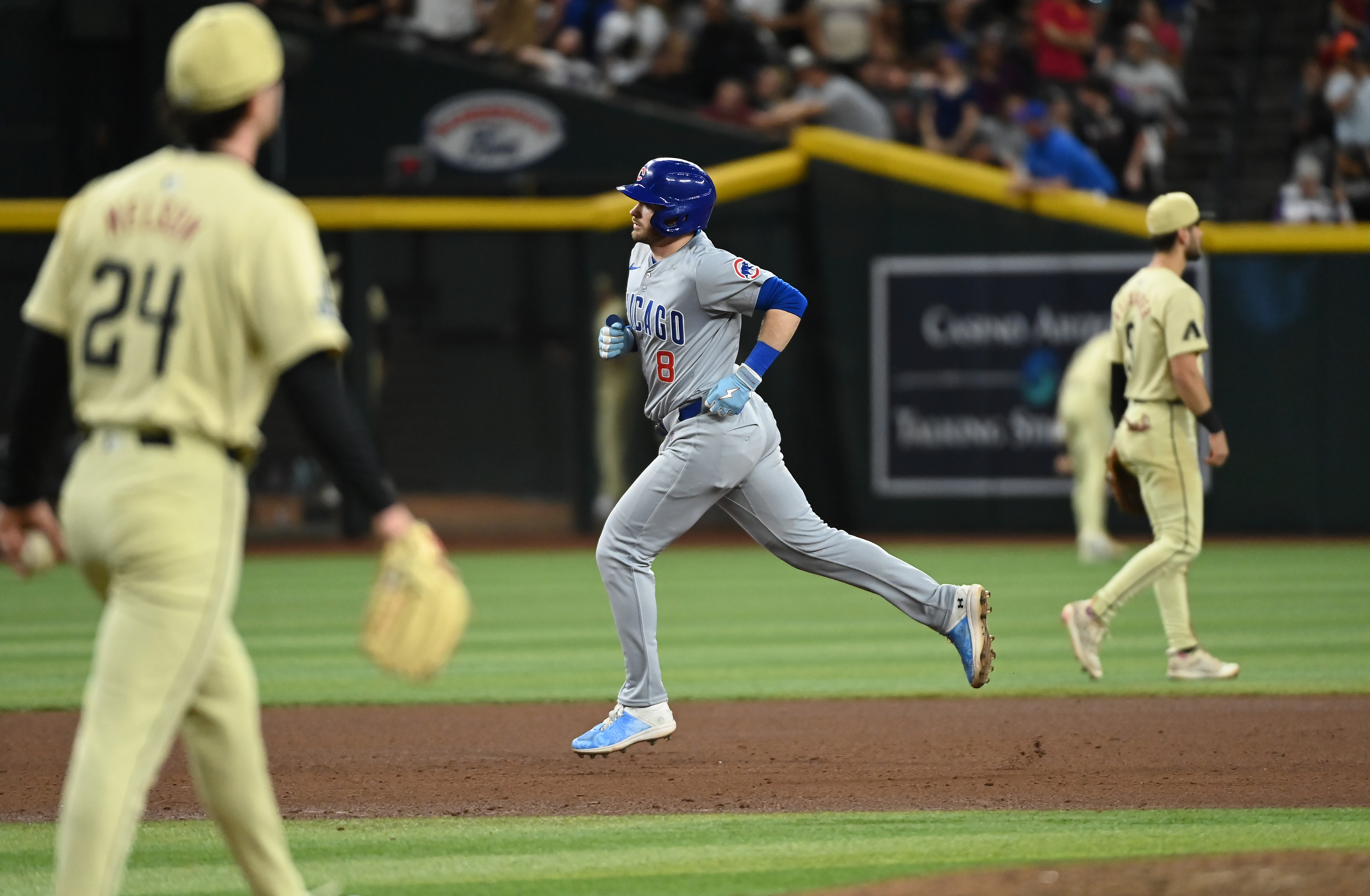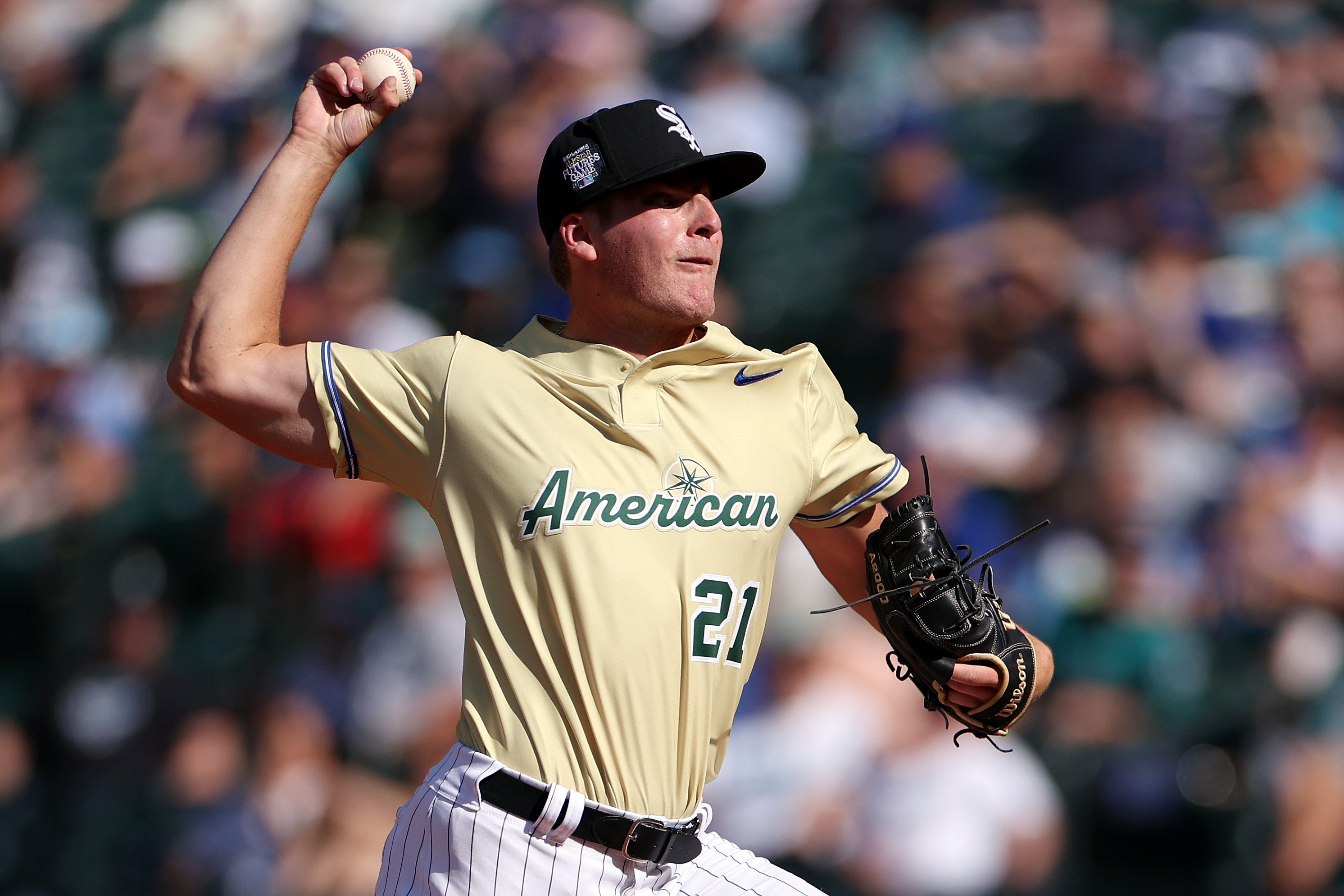WASHINGTON — When the end came, it came fast. It came in waves of names and numbers and, mostly, emotions.
The Cubs pitched a combined no-hitter to beat the Dodgers on June 24 and forge a tie for first place in the National League Central, positioned for a run at a seventh consecutive winning season, a sixth playoff appearance in that stretch — if not a second championship — with the same beloved core of All-Stars.
And in 36 days flat it was gone, billowing up in the smoke of a 24-hour trade-deadline fire sale that sent Anthony Rizzo and Javy Báez to the two New York teams and Kris Bryant to the team with the best record in baseball, in San Francisco.
Stay in the game with the latest updates on your beloved Chicago sports teams! Sign up here for our All Access Daily newsletter.
The magnitude of the players involved and suddenness of the end of the most successful six-year run in franchise history made it unlike any trade deadline this club and its fans had ever experienced — maybe for any team in recent memory.
“Definitely an emotional time, an emotional 24 hours,” Cubs pitcher Jake Arrieta said.
“It’s tough to see something like this come to an end. But everything does, eventually.”
Nine players in all were traded by the Cubs since the All-Star break, including seven in the last 24 hours before Friday afternoon’s deadline.
MLB
None more impactful than the three All-Star core guys — for the losses they represent on the field and on the minds and hearts of fans and friends in the clubhouse.
RELATED: Rizzo trade signals end of era: 'It just won't be the same'
“Emotional is the first word that comes to mind,” manager and former World Series teammate David Ross said Friday afternoon in the immediate aftermath of the trades — the Cubs scrambling to get players in from Iowa to fill the roster even as Ross spoke.
“Sad. Difficult. A lot of negative words that I usually don’t like to use on these Zooms,” Ross added.
When he was traded Thursday, Rizzo walked the outfield at Wrigley with his family one last time before leaving for Miami (where he homered for the Yankees in his first game).
When Bryant got the news Friday afternoon, he took the call in the visitors dugout at Nationals Park, hugged nearby hitting coach Anthony Iapoce, and then took a step into the tunnel, where he stopped and appeared to get emotional.
Emotions?
“Oof. It’s been a lot,” said Báez, who talked briefly before heading to the airport for New York, where he’ll join one of his closest friends in the game, $341 million Mets shortstop Francisco Lindor.
“I think with [Rizzo] being the first one that got traded, it was the hardest one to say bye. It’s still hard to say bye to the boys and to the organization. But at the same time, I know it’s going to be fun playing with Lindor and seeing this new chapter and how it goes.”
The only thing harder than saying goodbye might have been imagining this kind of an end to that kind of an era.
Even in the days leading up to the deadline it was unclear at best whether the Cubs would trade away more than one of the three big core guys — never mind all three.
Team president Jed Hoyer, unshaven and hoarse, spoke publicly Friday for the first time in two weeks, emerging from trade talks looking as exhausted and wrought as any executive might after wearing this level and volume of unpopular moves in one fell swoop.
“Honestly, we were preparing and scouting to be buyers,” Hoyer said of the front office stance during the Dodgers series — before an 11-game losing streak altered the direction of the season and just as quickly the direction of a franchise.
From a baseball-business standpoint, the decisions were easy: Eight of the nine players traded, including all three core guys, were in walk years. And the ninth, closer Craig Kimbrel, is in his final guaranteed year, with a club option for 2022.
But Hoyer wore the emotional scars of the moment on his unshaven face as much as he did the stress of the around-the-clock workload in recent days and weeks.
He became close with Rizzo as a Red Sox executive during Rizzo’s fight with cancer as a Boston minor-leaguer, then was part of trading for him twice, in San Diego and again in Chicago. Hoyer scouted Bryant before the Cubs drafted him second overall in 2013. He watched Báez grow from a shy prospect into baseball’s “El Mago.”
“Difficult? No question,” he said. “And emotional. But to me there was really no reason not to be as aggressive as possible to do that. There was no reason to go halfway.”
Maybe it’s no accident that each of the three landing spots might have been the most desired for each for personal and competitive reasons. And Hoyer said he’s leaving the door open to explore free agent talks with all of them after the season (though sources push back on how much desire there will be for that).
Either way, there was no escaping how personal all these moves were for everyone involved, including the man pulling the trigger.
Báez and Rizzo talked after the fact about Hoyer’s transparency and direct contact during the final days of the process. Bryant, who left for San Francisco too quickly to be available to media Friday, has talked since spring training about appreciating Hoyer’s open lines of communication compared to his predecessor, Theo Epstein.
“Some of those conversations and moments were incredibly difficult because these are players that have been part of the best Cubs run in history,” Hoyer said.
“Look,” Ross said, “these guys changed the history here. They changed the expectations about this organization. They changed the caliber of play that’s expected. They changed the expectations for a fan base that’s passionate and a place that’s amazing to play.”
Which was part of what made it seem so impossible to believe that so many goodbyes and hugs and reeling emotions could come down on one team so fast.
One memorable group of history-making players gone in the moistened blink of an eye.
“It happened so fast,” Báez said. “I feel like five years [ago] was like last year.”


